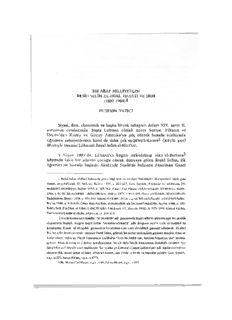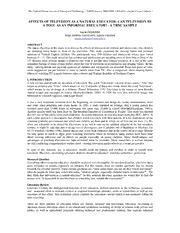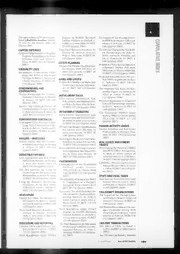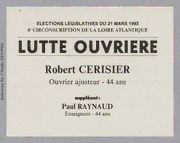
redMaPPer III: A Detailed Comparison of the Planck 2013 and SDSS DR8 RedMaPPer Cluster Catalogs PDF
Preview redMaPPer III: A Detailed Comparison of the Planck 2013 and SDSS DR8 RedMaPPer Cluster Catalogs
Mon.Not.R.Astron.Soc.000,000–000 (0000) Printed31January2014 (MNLATEXstylefilev2.2) redMaPPer III: A Detailed Comparison of the Planck 2013 and SDSS DR8 RedMaPPer Cluster Catalogs E. Rozo1, E. S. Rykoff1, James G. Bartlett2,3, Jean-Baptiste Melin4. 1SLACNational Accelerator Laboratory, Menlo Park, CA 94025, U.S.A. 2APC – Universit´e Paris Diderot, CNRS/IN2P3, CEA/lrfu, Observatoire de Paris, Sorbonne Paris Cit´e, 75205 Paris Cedex 13, France. 4 3Jet Propulsion Laboratory, California Institute of Technology, Pasadena, California, U.S.A. 1 4DSM/Irfu/SPP, CEA-Saclay, F-91191 Gif-sur-YvetteCedex, France. 0 2 n 31January2014 a J 0 ABSTRACT 3 We compare the Planck Sunyaev-Zeldovich (SZ) cluster sample (PSZ1) to the Sloan DigitalSkySurvey(SDSS)redMaPPercatalog,findingthatallPlanckclusterswithin ] the redMaPPer mask and within the redshift range probed by redMaPPer are con- O tainedintheredMaPPerclustercatalog.Thesecommonclustersdefineatightscaling C relationintherichness-SZmass(λ–MSZ)plane,withanintrinsicscatterinrichnessof h. σλ|MSZ =0.266±0.017. The corresponding intrinsic scatter in true cluster halo mass at fixed richness is ≈ 21%. The regularity of this scaling relation is used to identify p failuresinboththeredMaPPerandPlanckclustercatalogs.Ofthe245galaxyclusters - o in common, we identify three failures in redMaPPer and 36 failures in the PSZ1. Of r these,atleast12areduetoclusterswhoseopticalcounterpartwascorrectlyidentified t s inthe PSZ1,but wherethe quotedredshiftforthe opticalcounterpartin the external a data base used in the PSZ1 was incorrect. The failure rates for redMaPPer and the [ PSZ1 are 1.2% and 14.7% respectively, or 9.8% in the PSZ1 after subtracting the 1 external data base errors. We have further identified 5 PSZ1 sources that suffer from v projection effects (multiple rich systems along the line-of-sight of the SZ detection) 6 and17newhighredshift(z ∼>0.6)clustercandidatesofvaryingdegreesofconfidence. 1 Should allof the high-redshiftcluster candidates identified here be confirmed, we will 7 have tripled the number of high redshift Planck clusters in the SDSS region. Our re- 7 sultshighlightthepowerofmulti-wavelengthobservationstoidentifyandcharacterize . 1 systematic errors in galaxy cluster data sets, and clearly establish photometric data 0 both as a robust cluster finding method, and as an important part of defining clean 4 galaxy cluster samples. 1 : Key words: cosmology:clusters v i X r a 1 INTRODUCTION behaviorcanbeusedtoflagsystemsthatmaybesubjectto otherwiseunsuspectedsystematiceffects.InRozo&Rykoff Theabundanceof galaxy clusters asafunction of mass isa (2013, hereafter Paper II) we performed an extended anal- well known cosmological probe (Henry et al. 2009; Oukbir ysis of this type in order to characterize the failure rate & Blanchard 1992; Bartlett & Silk 1993; Eke et al. 1996; in the recently published Sloan Digital Sky Survey (SDSS) Viana&Liddle1996;Vikhlininetal.2009;Rozoetal.2010; redMaPPerclustercatalog(Rykoffetal.2013,hereafterPa- Mantzetal.2010,andmanyothers).Assuch,itisofcritical per I). In this context, “failure” refers to either false clus- importance for galaxy cluster surveys to control the level teridentificationsorincorrectclusterpropertyassignments, of systematic failures in the cluster selection and redshift e.g., redshifts and/or richness. In that work, we estimated assignment, lest the corresponding cosmological inferences theredMaPPer failure rate at ∼1%. bebiased. Onewaytotestaparticularclusterselectionalgorithm PaperII waslimited partlybytheavailability ofX-ray is to utilize multi-wavelength data to establish the scaling dataathigherredshifts,partlybythelargestatistical noise relations of galaxy clusters: gross deviations from themean inhowX-rayluminosity tracesclustermass, andmostly by (cid:13)c 0000RAS 2 E. Rozo, E. S. Rykoff, J. G. Bartlett, J.B. Melin the lack of high-resolution X-ray data for complete optical thecatalog istrimmedaroundthemask.SZsourcesarede- samples. Consequently, Planck data on a large number of tected using three different types of algorithms: 2 matched galaxyclustersprovidesadditionalcritical consistencytests filter algorithms (MMF1, MMF3, Melin et al. 2006) and a to help better characterize failures in the redMaPPer clus- Bayesian findercalled Powell–Snakes (PwS, Carvalho et al. ter finding algorithm. We note that while in Paper II we 2012). Allthreealgorithms placepriorsontheclusterspec- did in fact consider Planck Sunyaev-Zeldovich(SZ) data in tral and spatial characteristics, which are in turn employed our analysis, at the time only the early Planck SZ results to distinguish SZ sources from random noise fluctuations. hadbeenpublished,whichdidnotallowforthesignificantly A comparison of various SZ cluster selection algorithms is moredetailedanalysisperformedinthepresentwork.Here, presented in Melin et al. (2012). we extend the analysis of Paper II to include the newly re- After running each of the three cluster finders, all leased Planck SZ cluster sample (PSZ1, Planck Collabora- S/N >4.5sourcesarecollated intoamastercatalog, which tion XXIX2013, hereafter PXXIX). is cleaned for obvious contamination based on the Planck OuranalysisalsoteststherobustnessofthePSZ1clus- highfrequencyspectralinformation.TheSZsignalstrength, ter selection algorithm, complementing the validation pre- measured by the integrated Compton-y parameter YSZ, of sented in PXXIX with the well-characterized redMaPPer the remaining sources is typically strongly degenerate with optical catalog. While PXXIX encountered difficulty in us- theclustersize,aproblemthatisresolvedbytheuseofinfor- ingtheirselected opticalsamples touniquelyidentifyPSZ1 mative priors on the relation between YSZ and cluster size. sources, we demonstrate that this difficulty is not endemic Since cluster radii are typically defined in terms of matter tophotometricclustercatalogs.Specifically,theredMaPPer overdensitycriteria,suchapriortakestheformofafiducial galaxyclusterrichnessproducesawelldefined,tightscaling M–YSZ relation, so that a by-product of the measurement relation with SZ mass proxies, and outliers of this relation is a cluster mass estimate for each system. PXXIX utilizes alwayssignalasystematicerrorineithertheredMaPPeror the M–YSZ relation of Arnaud et al. (2010) for these pur- thePSZ1clustercatalogs. Ourresultsfirmlyestablish opti- poses, and afull description of thealgorithm will appearin cal dataas a critical component of multi-wavelength efforts afuturepublication (Arnaudet al., in preparation, see also aimedat definingwellcontrolled, fullycharacterized galaxy Gruen et al. 2013). cluster samples. Inadetailedstudy,Rozoetal.(2012a,b,c)notedsignifi- Ourpaperislaidoutasfollows.Section2introducesthe cantdifferencesinpublishedclusterX-raymasscalibrations variousdatasetsemployedinourstudy.Section3describes and argued that the mass calibration adopted in Arnaud ouranalysisandpresentsourresults,andSection4presents etal.(2010)wouldleadtotensionbetweenobservedcluster ourconclusions.Throughout,weadoptafiducialflatΛCDM abundanceandthecosmologicalconstraintsfromthecosmic cosmology with Ωm = 0.3 and h=0.7, consistent with the microwave background (Rozo et al. 2013). This was borne choice in PXXIX. out in the first results from Planck. Consequently, we do not take the “SZ-mass” (MSZ) reported in PXXIX as an accurate determination of cluster total mass. However, the reportedSZmassisawelldefinedSZobservable—indeed, 2 DATA itismathematicallyequivalenttoYSZ —andthusitcanbe used to define scaling relations and to study the regularity 2.1 The Planck XXIX Cluster Catalog of thePlanck and redMaPPer cluster samples. The Planck satellite (Tauber et al. 2010) was launched on Finally, we note that in order to estimate YSZ and the May 14, 2009, as the third generation space mission ded- corresponding SZ mass MSZ, a cluster redshift is needed icated to cosmic microwave background observations. The foreachdetection.InthePSZ1,theseredshiftsareobtained Planck payload consists of two instruments, the Low Fre- either by cross matching with various catalogs, or through quency Instrument covering 30, 44 and 70 GHz (Bersanelli extensivephotometricandspectroscopicfollow-upofPlanck et al. 2010; Mennella et al. 2011), and the High Frequency SZ sources. When matching to external catalogs, PXXIX Instrument with bands centered at 100, 143, 217, 353, 545, follows a rank-ordered priority list. The top priority is the and 857 GHz (Lamarre et al. 2010; Planck HFI Core Team MCXCcatalog(Piffarettietal.2011),followedbyNEDand 2011),withangularresolutionvaryingfrom33′to5′.Aseries SIMBAD, followed by redshifts from the Wen et al. (2012) of early results were published in 2011 (Planck Collabora- SDSSphotometricclustercatalog. Afewremainingclusters tion I 2011), and thefirst cosmology results were published gettheirredshiftseitherfromadditionalexternalphotomet- in2013alongwith15.5monthsofsciencedata(PlanckCol- riccatalogs,orfromaninternalanalysisofSDSSdatawithin laboration I 2013). the Planck team. Many clusters (more than 200) were also The PSZ1 is based on the first 15.5 months of Planck subjects of both photometric and spectroscopic follow-up. observations(PlanckCollaborationXXIX2013).TheSZde- The final PXXIX SZ cluster catalog is a compilation of all tectionusesthesixhighestPlanckfrequencychannels,span- thisdata. ning 100GHz to 857GHz. Prior to detecting SZ sources, Throughout, we only consider the list of galaxy clus- a Galactic mask and a point source mask based on the ters labelled in PXXIX as confirmed systems. We restrict Planck Catalogue of Compact Sources (Planck Collabora- ourselves to systems with reported redshifts in the ranges tion XXVIII 2013) are applied. The resulting holes in the z ∈ [0.08,0.6] since z = 0.6 is the maximum redshift at maps are filled in prior to searching for SZ sources, and which redMaPPer can detect massive clusters in the SDSS (cid:13)c 0000RAS,MNRAS000,000–000 redMaPPer III: Comparison with the Planck 2013 Cluster Catalog 3 with reliable redshift estimates. When considering scaling FLEX (B¨ohringer et al. 2004), BCS (Ebeling et al. 1998), relations, we exclude clusters with z > 0.5 since clusters SGP (Cruddace et al. 2002), NEP (Henry et al. 2006), above this redshift have very large measurement errors in MACS(Ebelingetal.2001),andCIZA(Ebelingetal.2002; their richness. Kocevski et al. 2007), while the contributing serendipitous catalogs are160D (Mullis etal. 2003), 400D (Bureninetal. 2007), SHARC(Romer et al. 2000), WARPS (Horner et al. 2.2 The SDSS DR8 redMaPPer Cluster Catalog 2008), and EMSS (Gioia et al. 1990). The data from each redMaPPer is a new red-sequencephotometric cluster find- oftheindividualgalaxycatalogswascollectedandhomoge- ingalgorithm whichwasrecentlyappliedtotheSDSSData nized, deleting duplicate entries, and enforcing a consistent Release 8 (Aihara et al. 2011). The algorithm and SDSS X-rayluminositydefinition.Inthecatalog, LX isdefinedto DR8 catalog is described in detail in Paper I. A detailed be the X-ray luminosity in the 0.1–2.4 keV band within an comparisonofredMaPPertootherphotometricclusterfind- R500c aperture. We will use this catalog as a baseline for ing algorithms is presented in Paper II, which also includes understandingthecentering offset distribution between the amulti-wavelengthstudyoftheperformanceofredMaPPer Planck and redMaPPer cluster centers. in theSDSS. Briefly,redMaPPeriterativelyself-trainsamodelofred- sequence galaxies calibrated by exploiting an initial seed 3 ANALYSIS OF PSZ1 CLUSTERS spectroscopic galaxy sample. The associated spectroscopic 3.1 Cluster Matching requirements are minimal, and easily satisfied by existing SDSS spectroscopy. Once the red-sequence model has been We match the PSZ1 to the SDSS DR8 redMaPPer catalog trained,thealgorithmattemptstogrowagalaxyclustercen- using a simple angular matching algorithm. To match the tered about every SDSS photometric galaxy. The galaxies two catalogs, we rank order the PSZ1 clusters by signal- are first rank-ordered according to their likelihood of being to-noise (S/N).Starting from thetop (largest S/N)cluster, acentralgalaxy.Oncearichgalaxyclusterhasbeenidenti- wedefineitsmatchastherichestredMaPPersystemwithin fied (λ>5, where λ is the numberof red-sequence galaxies 10′ofthereportedPlanckdetection.Ifamatchisfound,the hosted bythe cluster), thealgorithm iteratively determines corresponding redMaPPer system is removed from the list aphotometricredshiftbasedonthecalibratedred-sequence of candidate redMaPPer matches, and we move on to the model,andrecenterstheclustersaboutthebestclustercen- nextPSZ1cluster.Weemphasizethatourmatchingcriteria ter, as gauged from the photometric data. The final pub- doesnotimposeanyrestrictionsontheredshiftsofmatched lished cluster catalog is then further trimmed to a richness cluster pairs. This is purposely so, as we wish to compare limitofλ>20forz60.35.Abovethisredshift,thecatalog theredshiftsreportedinthetwoclustercatalogs.Ofcourse, becomes “flux” limited due to the SDSS survey depth, and this also implies that all Planck–redMaPPer cluster pairs the richness limit increases rapidly with redshift. Roughly should only be considered tentative associations, pending speaking,richnessmeasurementsarereliableouttoz=0.5. theresults of ourfull analysis, summarized in Section 3.5. For z ∈ [0.5,0.6], clusters can be detected, but their rich- Figure 1 compares the PSZ1 cluster redshifts to those ness measurements become very noisy. When run on SDSS of the matched redMaPPer clusters. We restrict ourselves data, automated cluster finding is not really feasible with to the redshift range z ∈ [0.08,0.6], where the redMaPPer theredMaPPer algorithm above redshift z=0.6. redshifts are expected to be accurate. There are 245 PSZ1 In what follows, we will match the Planck cluster cat- systems in this redshift range within our angular mask, 35 alog to the redMaPPer cluster catalog. One obvious con- of which show upas redshift outliers. These outliers will be cern of this type of exercise is that a Planck cluster may discussed in Section 3.4. Fornow, we will focus on thesub- go unmatched if the system falls below the redMaPPer sample of galaxy clusters where the two redshift estimates detection threshold. In order to minimize this possibility, agree.Thisway,bycharacterizingtherelationbetweenopti- we always match the Planck catalog to our own private calandSZdatafirstusingourwellmatchedclusters,wecan redMaPPer catalog, which lowers the detection threshold lateronusethisinformation toresolvetheredshiftconflicts from λ = 20 to λ = 5. Doing so increases the redMaP- shown in Figure 1. Per cluster sample by almost a factor of 16, from ≈26,000 clusters to ≈412,000 systems. As it turns out, however, all good Planck–redMaPPer cluster matches result in pairs of 3.2 The λ–MSZ Scaling Relation: richness λ>20. We consider the λ–MSZ relation of the galaxy clusters for which the PSZ1 and redMaPPer redshifts agree. Since the richness errors become very large at z > 0.5, we further 2.3 The MCXC Cluster Catalog restrict our analysis to systems with redMaPPer redshift The Meta-Catalogue of X-ray Clusters (MCXC: Piffaretti z 6 0.5 (this is the redshift assigned by redMaPPer pho- λ et al. 2011) is a compilation of galaxy clusters based on tometry). This results in a sample of 191 galaxy clusters, publicly available X-ray data from both the ROSAT All shown in Figure 2. We see that there is a tight relation Sky Survey (RASS: Voges et al. 1999) and serendipitous betweentheredMaPPerclusterrichnessλandtheSZ-mass searches in ROSAT pointed observations. The RASS con- MSZ,thoughtheexistenceofasmalloutlierpopulationwith tributingcatalogs are NORAS(B¨ohringer et al. 2000), RE- low richness and high SZ mass is immediately apparent. (cid:13)c 0000RAS,MNRAS000,000–000 4 E. Rozo, E. S. Rykoff, J. G. Bartlett, J.B. Melin Figure 1. Comparison of PSZ1 redshift to the redshift of its Figure2.RelationbetweenclusterrichnessλandSZ-massMSZ. tentative redMaPPer match. The matches will be revised based The cluster richness is evaluated at the optical center, and is ontheresultsofoursubsequentanalysis.Bluepointsaresystems takendirectlyfromtheredMaPPerclustercatalog.TheSZ-mass included in the PXX cosmology analysis (Planck Collaboration istakendirectlyfromPXXIX.Onlyclusterswithconsistentred- XX 2013). Black points are clusters for which the redMaPPer shiftmatches areincluded(i.e.,blackpoints inFig.1).Toavoid and PSZ1 redshifts are consistent with each other. There are 33 clusterswithlargerichnesserrors,werestrictouranalysistosys- 3σ outliers, shown in red, and 2 additional obvious outliers in temswithzλ60.5;thisleavesatotalof191objects.Theredsolid blue that form part of the PXX cosmology sample. We discuss line is the best fit scaling relation, while the dashed lines mark theoutliersinSection3.4. the 1σ intrinsic scatter. Blue points are 3σ outliers. Planck 299 isshownasapurplepointwitherrorbars.Onlyasmallrandom fractionofclustersisshownwitherrorbarstoavoidovercrowding WehavefitthisdatausingtheBayesianfitteremployed theplot. in Rozo et al. (2012d), with an automated outlier rejection of 3σ outliers. Wefind hlnλ|MSZi = a+αln(cid:18)5.23×M1S0Z14 M⊙(cid:19) (1) iwnhgicchanindcidluadteesgDalRax8ypohvoetrodmenestirtiicesorarseperecptroorstceodpiicnrTeadbshleift3s, a = 4.572±0.021 (2) where available. We note that there is one additional system that ap- α = 0.965±0.067 (3) pears to be an outlier by eye, Planck 299. The cluster is σ = 0.266±0.017. (4) lnλ|MSZ not flagged as an outlier by our automated algorithm be- Ifweassumenointrinsiccovariancebetweenclusterrichness cause of itslarge richness error bar.The redMaPPer match and SZ signal at fixed mass, and an intrinsic scatter of the is located 5.5′ away from the reported PSZ1 location. Vi- SZ-based mass estimates of 15% (20%), the corresponding sualinspectionoftheSDSSfieldrevealsaveryobvioushigh estimate of the intrinsic scatter in true halo mass at fixed redshift (zspec = 0.748) cluster match 3′ away, located at richnessis≈21% (17%)(seeRozoetal.2012b, forhowthe RA = 231.6383, DEC = 54.1520, shown here in Figure 3. observed scatter σ is related to the desired scatter Thus, we consider our automated redMaPPer association lnλ|MSZ σ ).Thesevaluesarebroadly consistent with thosede- (and therefore the PSZ1 redshift) incorrect. Of course, a lnM|λ rivedinPaperIIbasedonMgas.Ourresultsarealsorobust definitive statement would require confirmation of our pro- to lowering themaximum cluster redshift z6zmax =0.5. posed cluster match, and for said cluster to obey either X- Our algorithm identifies fiveoutliers. The first of these ray–SZ or optical–SZ scaling relations. is Abell 963 (Planck 617), which was identified in Paper II Before we move on, we emphasize that this analysis as having a systematically low richness because of a small doesnotproperlyaccountforselectioneffects,sowecaution regionofbadphotometryaroundabrightstarinSDSS.For against relying on the above scaling relation for precision the remaining four outliers, we find no similar redMaPPer work. Our only goals in this work are to demonstrate the failures, suggesting that the SZ detection by Planck is not existenceofatightscalingrelation,tohighlighttheregular- sourced by the redMaPPer cluster, and therefore that the ityofopticalrichnessesasamasstracer,andtodemonstrate assigned PSZ1clusterredshift isincorrect.Inallfourcases, the utility of optical data in understanding and improving visual inspection of the corresponding SDSS and WISE thePlanck SZ cluster catalog. fields revealed galaxy overdensities with faint, very red op- Inshort,ofthe210 non-redshiftoutliersinSection 3.1, ticalcounterparts,suggestingallfouraregoodhighredshift only 191 havez 60.5. These defineatight scaling relation, (z>0.6)clustercandidates.TheseclustersarePlanck1093, fromwhichweestimateascatterinmassatfixedrichnessof 719, 729, and 441. The RA and DEC of the correspond- ≈21%.Thereare,however,6outliers.Oneoutlierisdueto (cid:13)c 0000RAS,MNRAS000,000–000 redMaPPer III: Comparison with the Planck 2013 Cluster Catalog 5 Figure4.DistributionofangularoffsetbetweenPlancklocation and the corresponding redMaPPer or MCXC cluster center, as labeled. Both sets of clusters are restricted to the same redshift range. The red and black dashed curves are smooth models for eachofthedistributions(seetext). Figure 3. Proposed high redshift cluster match to Planck SZ source299.Theclustercandidate(redcircle)shownaboveisata have a centering offset that is uniformly distributed out to distanceof3′fromthereportedPlancklocationfortheSZsource 1 Mpc. The resulting distribution of angular offsets is the 299.Thepurplecirclesegmenthasaradiusof3′,andiscentered atthereportedPlancklocation.Theentireboxis2′×2′,centered blackdashedline.AKStestrevealsthatthemodelisconsis- ontheopticalhighzclustercandidate.Thecentralgalaxyofthe tent with the observed distribution for Planck–redMaPPer proposed cluster candidate has a spectroscopic redshift zspec = matches.Wenotethatthedifferencebetweentheblackand 0.748.Theredcirclehasaradiusof0.3′ or≈130kpc. reddashedcurvesinFigure4isrelativelyminor:opticalmis- centeringactstotransferasmallbutnon-negligibleamount ofprobabilityfromthepeakat1′separationtoatailat≈5′ bad photometry in SDSS, while the remaining five systems separation. were incorrectly associated by our matching algorithm and Wehavevisuallyinspectedallgalaxyclusterswherethe thus have incorrect redshifts in PSZ1. Visual inspection re- offsetrelativetoredMaPPerislargerthan5′.Thereareten vealspossiblehighredshift(z >0.6)counterpartsforallfive such clusters. Of these, two clusters, Planck 278 and 445, of these systems. Interestingly, all 6 of these systems were appear to be simple statistical fluctuations in the center- SZsourcesmatchedtolowrichnessclustersintheWenetal. ingoffsets,which are5.0′ and5.3′ respectively.That is, the (2012), Hao et al. (2010), or Szabo et al. (2011) catalogs. Planck–redMaPPer matches appear to be reasonable, and wedonot findotherstructureswithin thefield of view; the clusters simply appear to populate the large centering off- 3.3 Cluster Centering set tail of the distribution. Four clusters (Planck 728, 249, Figure4showsthedistributionofangularoffsetsofthePSZ1 472, and 587) are systems with two obvious galaxy clumps, clusters relative totheredMaPPer centers. Asin theprevi- which not surprisingly can lead to large offsets when the oussection,werestrictouranalysistogalaxyclusterswhere SZ center falls closer to the opposite component from that the redMaPPer and PSZ1 redshifts agree. Moreover, we re- selected by redMaPPer, but it is not entirely clear which move from the sample the six galaxy clusters identified as componentisdominant.Inthiscontext,wedonotrelyheav- erroneousclustermatchesinSection3.2.Forcomparison,we ily on the Planck centering since Planck centers are them- alsoshowthecorrespondingdistributionforPlanck–MCXC selveshighlyuncertain,andinsomecasesourvisualinspec- clustermatches(redhistogram).Thetwooffsetdistributions tion suggests that the main cluster component is the one (Planck–redMaPPer and Planck-MCXC) are not consistent that is furtherfrom thePlanck position (Planck Collabora- with each other, as determined via a KS test. We attribute tion XXIX 2013). A more definitive statement about these thisdifferencetomiscenteringintheoptical.Totestthishy- clusterswillrequirehigh resolution X-raydata.Onecluster pothesis,wefirstuseaKernelDensityEstimator(reddashed (Planck113)isanobviouscaseofopticalmiscenteringbased line)toobtainasmoothmodelofthePlanck–MCXCcenter- on visual inspection of thefield. ingdistribution.Thismodelisthenconvolvedwithasimple Onecluster (Planck280) ismatched toarich redMaP- miscenteringmodelforredMaPPersystems,inwhich85%of Per cluster (λ = 126.5, z = 0.324), but the match is 6.6′ λ the clusters are correctly centered, and the remaining 15% (1.9 Mpc) away. We were able to identify a galaxy over- (cid:13)c 0000RAS,MNRAS000,000–000 6 E. Rozo, E. S. Rykoff, J. G. Bartlett, J.B. Melin density in SDSS and WISE that may be a better match to this Planck detection, at RA = 340.6030, DEC = 17.5214, z = 0.86±0.10. The quoted photoz is that of the putative central galaxy. We expect our original tentative association isincorrect,andthat thePlanckdetectioncorrespondstoa highredshiftgalaxycluster.Wenotetheangulardistanceto Planck 280 is ≈2θ500, so it is also possible that the system is suffering from projection effects. Of the remaining two clusters, cluster Planck 77 may or may not be a statistical fluctuation. The centering offset to its redMaPPer match is very large, 7.7′, and the optical centerisobviouslycorrectuponvisualinspection.However, Planck 77 is a low redshift cluster (z = 0.118), so the ob- served offset is in fact less than the assigned θ500 angular radius. We are also unable to identify galaxy overdensities in WISE that suggest a high redshift cluster. Finally, we note, however that Planck 77 is a low S/N system that is only detected by one of the three algorithms used to con- structthePSZ1sample(PlanckCollaboration XXIX2013). Because of the large angular offset and the fact that the cluster is only detected by one of the three cluster finding algorithms,weconsiderPlanck77apossiblefalsedetection. The remaining large centering offset cluster is Planck 52, which PXXIX notes forms a complicated triple system Figure 5.SDSSimageoftheskyaroundPlanck SZsources 51, withPlanck51andPlanck53.WithredMaPPerweareable 52, and 53. Each Planck cluster is marked with a 3′ circle, as to shed considerable light on the region. The entire field labeled. There are 3 rich redMaPPer clusters in the region, for containing clusters Planck 51 through 53 is shown in Fig- whichwehave circledgalaxies brighter than 0.5L∗ withamem- bershipprobabilityp>0.5. Each redMaPPer cluster is assigned ure5.ThesouthernmostrichredMaPPerclusterisRM1195 m(λa=tch8e5d.4t,ozPsplaecnc=k05.13.3N8,otme,emhobweervgear,latxhiaetsPinlarnecdk),51wshiitcshdiis- cayadniff(ezrspenect=co0lo.4r:43R),Man1d99R5Mis6r8e9dis(zbslpueec(=zsp0e.c33=8)0,.3R8M2).11143 is rectlyontopofRM11143(λ=23.5,zspec=0.443,member galaxiesincyan).ThissuggeststhatPlanck51ispickingup 51andPlanck53clusters,explainingwhyitsitsinbetween theSZsignalofthericherredMaPPerclusterRM1195,but the two systems and has no good redMaPPer association. thatthePlanckdetectionismiscenteredduetoaprojection Thisisconsistentwiththelargepositionalerrorassignedby effect in the SZ between RM 1195 and RM 11143, pulling MMF3 tothisdetection.Inshort, weconsider Planck51 as theSZ detection towards thelatter system. affectedbyprojectioneffectsintheSZ,Planck52weflagas ThenorthernmostPlanckclusterisPlanck53,whichis a false detection (really, a blend of Planck 51 and 52), and a good match to RM 689 (λ=97.0, zspec =0.382, member Planck 53 is robustly associated with RM 689. galaxies in blue). Note that the spectroscopic redshifts of In short, of the ten clusters with large angular separa- Planck 51 and Planck 53 are significantly different (zspec = tions, two we consider good matches, four are double clus- 0.338 vs zspec = 0.382), corresponding to a line of sight ters,one isan obviouscase of optical miscentering, oneis a distanceof≈180Mpc,ornearly104 km/s,suggestingthese high redshift cluster candidate, and twoare labeled as false structures are not correlated. detections. This leaves us with Planck 52, which sits on an essen- tiallyemptypieceofsky,roughlyhalfwaybetweenPlanck51 andPlanck53.Ithasthreecandidatematcheswithrichness 3.4 Redshift Outliers λ > 20, two of which are better associated with Planck 51 We now turn our attention to the 35 redshift outliers in (RM1995andRM11143discussedabove),andoneofwhich Figure 1. These outliers could arise in one of three ways. isclearlyassociatedwithPlanck53.Wehaveinspectedboth If the Planck and redMaPPer clusters have been properly theSDSSandWISEimagesforapossiblehighredshiftclus- matched,theneitherthePXXIXredshiftisincorrect,orthe ter counterpart, but were unableto find one. redMaPPerredshiftisincorrect.Alternatively,thematching To explain the origin of Planck 52, we recall that the algorithm may have failed. We now determine the origin of PSZ1 is the union of three distinct cluster finding algo- each of theredshift conflicts identified in Figure 1. rithms, two matched filter methods (MMF1 and MMF3) and a Baysian source detectorcalled Powell–Snakes (PwS). Clusters Planck 51 and 53 were only detected by the PwS 3.4.1 Visual Inspection method, while Planck 52 was only detected by the MMF3 method (Planck Collaboration XXIX 2013). This strongly To begin with, we check our cluster matching by visually suggests that the MMF3 detection is a blend of the Planck inspectingtheSDSSandWISEimagesforeachofthePSZ1 (cid:13)c 0000RAS,MNRAS000,000–000 redMaPPer III: Comparison with the Planck 2013 Cluster Catalog 7 clustersthatresultedinaredshiftconflictinSection3.1.Our goal is to ensure that every PSZ1 cluster is matched to the best possible redMaPPer match. We emphasize that “best possible” does not mean correct; we sometimes find Planck sourcesthat havenoconvincingredMaPPer match.Insuch cases, we let the original match stand, with the expecta- tion that subsequent analysis will confirm those clusters as poor matches. It should also be noted that “unconvincing” is a qualitative decision made by us based on the visual in- spection.Quantitativetestswillbepresentedinsubsequent sections. Our visual inspection also revealed several Planck detections where the SZ signal is likely to be affected by projection effects, i.e., there are multiple rich galaxy clus- ters along the line-of-sight of the Planck detection. These clusters are flagged as such. Our results are summarized in Table 1. The table in- cludes both the PSZ1 redshift, and the redMaPPer photo- metricredshiftofthebestredMaPPermatchasdetermined from visual inspection. When a match is ambiguous, we do not report a redMaPPer redshift. In the cases where a cor- rect cluster redshift can be unambiguously identified, the corresponding redshift is written in bold. In brief, we find • 3 clusters where we confirm that the PSZ1 redshift is Figure 6. SDSS image for Planck 513. The large purple circle correct (Planck 1216, 500, and 216). The original redshift shown is 3′ (≈ 0.9 Mpc) in radius, centered on the Planck lo- conflicts were due to two incorrect cluster associations (in- cation. There is an obvious cluster of galaxies at this location, cludingoneincorrect match duetoredMaPPer incomplete- withspectroscopicredshiftzspec=0.350(RM87).However,this ness), and one incorrect redMaPPer redshift due to bad cluster was assigned a redshift of z = 0.211 in the PSZ1. The redcircles aregalaxies withredMaPPer membershipprobability SDSSphotometry. • 19 clusters where we confirm that the original associa- p>0.8brighterthan0.8L∗. tionwithredMaPPerclustersiscorrect,andtheredMaPPer redshift is correct. an incorrect redshift: there were multiple cluster for which • 8 unconvincing cluster matches. For these clusters, we thecorrect cluster redshift was equally obvious. expect the PSZ1 redshift to be incorrect, and for our best Thesecondsystemwewouldliketohighlight isPlanck redMaPPer match to prove unsatisfactory as well. In 7/8 510,whichisaspectacularexampleofanSZprojection.The cases, our visual inspection reveals a candidate high red- SDSS image centered on the Planck detection is shown in shift match for the Planck detection, with varying degrees Figure7.Thepurplecircleis3′ inradius,andiscenteredat of confidence. the Planck location. There are two nearby rich redMaPPer • 5clusterswheretheSZsignalappearstobesourcedby clusters, RM 128 and RM 141. We have circled all cluster anSZ-projectioneffect.ThesearePlanck732,1128,73,510, members with membership probability p > p0.8 and lumi- and 376. nosity L>0.8L for each of these clusters in red and cyan, ∗ respectively.Here,p0.8 istheprobabilitythresholdaccount- Comments on individual systems can be found in Ap- ing for 80% of the membership probability of the clusters, pendix A. Here, we showcase only two systems. The first is i.e., cluster Planck 513, which is the only PSZ1 cluster in the SDSS region that belongs to the Planck cosmology sample 0.8λ= pi. (5) in Planck Collaboration XX (2013) and has been assigned p>Xp0.8 an incorrect redshift. The SDSS image of this SZ source is We use this criterion for showing cluster galaxies to ensure shown in Figure 6.There isan obviouscluster in theimage comparablemembershipselectionbetweenthelowandhigh (RM 87), which itself has an obvious central galaxy. The redshift clusters.1 By applying a probability threshold that central galaxy has a spectroscopic redshift available, from isbasedonafixedfractionoftheclusterrichness,weensure whichweseezspec =0.350. Therearealsomultiplespectro- that comparable fractions of cluster membersare selected. scopic membersthat confirm this redshift. By contrast, the We see from Figure 7 that the two redMaPPer clus- assigned redshift in PXXIX is z =0.211. This redshift was matched to Abell 1430, and the association is correct, but theclusterredshifttakenfromSIMBADisclearlyerroneous. 1 Had we used a fixed probability cut (say p > 0.8), we would We have chosen to highlight this cluster because it formed haveselectedmoremembersforthelowredshiftclusterthanfor part of the cosmology sample in Planck Collaboration XX the high redshift cluster because membership assignment is less (2013),notbecauseitisaparticularly egregiousexampleof secureathighredshifts. (cid:13)c 0000RAS,MNRAS000,000–000 8 E. Rozo, E. S. Rykoff, J. G. Bartlett, J.B. Melin Table1.Summaryofourvisualinspectionofthe353σoutliersinFig.1.The“Cluster”columnistheindexusedastheuniqueidentifier in the PSZ1. The next two columns compare the PSZ1 redshift with the redMaPPer redshift estimate zλ. When possible, the correct clusterredshiftiswritteninbold.Spectroscopic redshiftsinthe“Comment”columnaretakendirectlyfromSDSS. Cluster PSZ1-z zλ Comment 513 0.211 0.363 ± 0.014 zspec=0.350. 1216 0.215 — MatchingprocedurefailureduetoredMaPPerincompleteness. 391 0.350 0.275 ± 0.009 DR8photo-z:z=0.265±0.015. 732 0.225 — zspec=0.472.SZ-projectionwithclusteratzspec=0.225. 1128 0.085 — zspec=0.559.SZ-projectionwithclusteratzspec=0.088. 660 0.222 0.293 ± 0.010 zspec=0.296. 622 0.495 — Unconvincing. Possiblehighz match,RA=42.8736,DEC=−7.9581. 484 0.317 — Unconvincing. Possiblehighz match,RA=178.1366, DEC=61.3629, z=0.86±0.11. 316 0.430 0.352 ± 0.014 zspec=0.350 537 0.353 0.287 ± 0.010 zspec=0.284 73 0.0916 — SZ-projectionofclustersatzspec=0.091andzspec=0.386. 888 0.412 0.330 ± 0.014 zspec=0.323 500 0.280 0.514±0.039 BadSDSSphotometry. 222 0.181 0.162 ± 0.005 zspec=0.163 865 0.278 0.234 ± 0.007 zspec=0.227 303 0.300 0.274 ± 0.009 zspec=0.269 97 0.361 0.310 Possibleprojection,butonecandidate ruledoutbyscalingrelation. 668 0.287 0.329 ± 0.013 zspec=0.335 574 0.196 — Unconvincing. Possiblehighz match,RA=170.9893andDEC=43.0600,z=0.72±0.13. 510 0.330 — Projectionoftwoclusterswithnoobviousbestmatch. 443 0.437 0.221 Possibleprojection,butonecandidate ruledoutbyscalingrelation. 764 0.285 0.454 ± 0.011 zspec=0.462 216 0.336 0.359 ± 0.016 zspec=0.336.Originalmatchincorrect,seeAppendix. 1123 0.114 0.219 ± 0.006 zspec=0.233.Seetextfordiscussion. 308 0.178 0.196 ± 0.005 DR8photo-z:0.200±0.010. 768 0.403 — Unconvincing. Possiblehighz match,RA=158.28934, DEC=13.79361, z=0.58±0.13. 779 0.256 0.294 ± 0.010 zspec=0.299. 292 0.186 0.229 ± 0.007 zspec=0.221. 234 0.400 — DR8photo-z:z=0.579±0.018.SZ-projectionwithclusteratzλ=0.594±0.035. 678 0.376 — Unconvincing. Possiblehighz match,RA=147.0918, DEC=24.7901, z=0.59±0.04. 376 0.178 — Unconvincing. PossibleSZprojectionofclustersatzspec=0.159andzspec=0.178. 505 0.172 — Unconvincing. Possiblehighz match,RA=172.23425, DEC=59.94395, z=0.64±0.08. 416 0.135 0.373 ± 0.014 DR8photo-z:z=0.40±0.02. 527 0.385 — Unconvincing. Possiblehighz match,RA=21.71503, DEC=−7.20770,z=0.72±0.04. 13 0.429 0.325 ± 0.013 zspec=0.312 ters are obviously collocated in the sky, and both coincide correct. Papers I and II demonstrated that the failure rate withthePlanckSZdetection.Bothsystemshave5members of the redMaPPer photometric redshifts is below 1%. Con- with spectroscopic redshifts, from which we derive cluster sequently,if the PSZ1 redshifts are correct, we ought to be redshifts zspec = 0.2566 and zspec = 0.3715. These com- able to findgood redMaPPer matches to thePSZ1 systems pare well with the redMaPPer photometric redshift esti- byredoingourrank-orderedcircularmatchingwhileadding mates z =0.267±0.008 and z =0.372±0.014. In short, theadditionalconstraintthattheredMaPPermatchesmust λ λ there is no doubt that these clusters are two separate sys- beconsistent (3σ) with the PSZ1cluster redshifts. In addi- tems projected along the line of sight, and that the depro- tion, based on our results in Section 3.3, we only look for jection by redMaPPer via photometric data was successful. cluster matches within 6′ of thePlanck sources. Therichnessesofthetwoclustersareλ=87.8andλ=84.0 respectively,whichdemonstratesthatneithersystemisobvi- Ourvisualinspection indicatesthatforthemajority of ouslydominant.Itisdifficulttoimagineamorespectacular the 35 redshift outliers identified in Section 3.1, the PSZ1 example of an SZ projection effect. redshifts are incorrect. To test this, we perform the above matching — including the redshift consistency requirement — and compare how these 35 galaxy clusters populate the 3.4.2 Validation Tests for the PSZ1 Redshifts λ–MSZ planerelativetothe185galaxyclustersthatdefined λ–MSZ relation in Section 3.2. Any PSZ1 clusters that go Weusetheλ–MSZ relation fromSection3.2asavalidation unmatched are arbitrarily assigned a richness λ = 5, the testofthePSZ1clusterredshifts.Specifically,letusassume minimumrichnessofthegalaxyclustersinourfullredMaP- thatforeachofourredshiftconflicts,thePSZ1redshiftsare Per catalog. (cid:13)c 0000RAS,MNRAS000,000–000 redMaPPer III: Comparison with the Planck 2013 Cluster Catalog 9 Figure 8. Comparison of the location in the λ–MSZ plane for the353σredshiftoutliersinFigure1(redpoints)andthepoints from Figure 2 defining the λ–MSZ relation. The solid blue line is the mean scaling relation, and the dashed lines delineate the 3σ scatter band. The points at richness λ = 5 are unmatched clusters. To assign a richness to the PSZ1 clusters, we have re- Figure 7. SDSS image for Planck 510. The large purple circle matchedtheredshiftoutliersfromFigure1whiledemandingthat shownis3′ inradius,centeredonthePlancklocation.Thereare theredMaPPerandPSZ1redshiftsagree.Insodoing,30clusters 2redMaPPerclustersatthislocation,RM128andRM141,each with at 5 spectroscopic members that confirm the redMaPPer remainas outliers inthe λ–MSZ plane, two of which aredue to bad SDSS photometry. The rest are PSZ1 redshift failures (see cluster redshift for their parent cluster. Cluster members with text). membership probability p > p0.8 (see text) and luminosity L > 0.8L∗ areshown with red (RM 128) and cyan (RM 141) circles. Evidently,Planck510isaspectacularexampleofanSZprojection effect. 3.4.3 Validation Tests for the redMaPPer Redshifts We now perform the converse analysis to that of Section 3.4.2, that is, we take the 35 redshift conflicts from Fig- ure1 and assume that theautomatically assigned redMaP- OurresultsareshowninFigure8.Thesolidbluelineis Per match is correct. We then remeasure MSZ for each of themeanλ–MSZ relation(seeFig.2),whilethedashedlines these 35 systems, holding the Planck location fixed, but markthe3σband.Ofour35originaloutliers,only5clusters adopting the redshift of the assigned redMaPPer cluster as canplausiblybematchedassumingthePSZ1redshift.Inde- thecorrect redshift. creasing order of S/N, these are Planck 732, 1128, 73, 510, Our visual inspection of the redshift outliers suggests and 216. Turning to the results from our visual inspection thatwewillbeabletoconfirm19clusterredshiftsascorrect. (Section 3.4.1 and Table 1), we see that the first 4 systems Inaddition,itispossible forthefivesystemslabeledasSZ- were identified as SZ-projections of multiple clusters, while projectionstoappeartobeacceptableclustermatches,fora the last system is one for which our original matching was totalof24expectednon-outliers.Theremaining11systems incorrect. The IDs of the projection clusters are given in (8unconvincingclusters,3clusterswherethePSZ1redshift Table 3. The remaining 30 outliers break into 28 incorrect is correct) we expect will beoutliers in the λ–MSZ plane. redshiftsinPSZ1andtworedMaPPerfailures(1incomplete- As shown in Figure 9, this is almost exactly what we ness, 1 bad photometry,Planck 1216 and 500 respectively). find. The solid blue line in the Figure is the mean λ–MSZ Wenotethatdespitethefact thatfourofthefiveclus- relation, while the dashed lines mark the 3σ band. Of the ters we flagged as SZ projection are non-outliers in the λ– original 35 redshift outliers, nine fall below the 3σ intrinsic MSZ plane, we should not consider this as evidence that scatter line. These are the three clusters with correct PSZ1 the PSZ1 redshift is appropriate. Indeed, in the following redshifts,andsixoftheeightunconvincingclustermatches. section, we find that these systems do not appear as out- However, two of the unconvincing matches are not obvious liers when we remeasure MSZ using the assigned redMaP- outliers in the MSZ–λ plane, and therefore remain as plau- Perredshifteither.Inotherwords,thefundamentalproblem sibleclustermatches.TheseareclusterPlanck376and768. for these systems is that these projection effects cannot be Note that Planck 376 is an unconvincing match in part be- assigned a single, unambiguous redshift: the SZ detection cause it may be an SZ projection. is fundamentally a combination of more than one structure Turningtotheremainingclusterslabelledasprojection along theline-of-sight. effects,weseethatthesesystemsdonotshowupasoutliers (cid:13)c 0000RAS,MNRAS000,000–000 10 E. Rozo, E. S. Rykoff, J. G. Bartlett, J.B. Melin becauseofbadSDSSphotometry.Ourestimateofthecatas- trophic failure rate for the SDSS redMaPPer catalog from thisanalysisistherefore3/245≈1.2%.Inaddition,weiden- tified 4 redMaPPer clusters as having two obvious galaxy concentrations,whichcanleadtolargecenteringuncertain- ties (Planck 728, 249, 472, and 587, Section 3.3), and one obvious centering failure in redMaPPer (Planck 113, Sec- tion3.3).NotethatthecenteringfailurerateofredMaPPer is, in fact, higher, as evidenced by utilizing high resolution X-ray data (Rozo & Rykoff 2013). The low rate of miscen- teringidentificationsfromthisanalysisreflectsthefactthat Planck cluster centering is noisy. Ouranalysishasalsoallowed ustoflag36clustersthat were assigned an incorrect redshift in PSZ1: five in section 3.2,threeinsection3.3,and28insections3.4.2.Foreachof theclusterswithincorrectly assigned redshiftsinthePSZ1, wehaveassignedthecorrectclusterredshiftwherepossible, andremeasuredMSZ atthenewlyassignedredshift.Thisis Figure9.Comparisonofthelocationintheλ–MSZplaneforthe largerthanthenumberofoutliersinFigure1becausesome redshiftoutliersinFigure1(redpoints)andthepointsfromFig- oftheclustersthatdonotshowupasoutliersinthatFigure ure2definingtheλ–MSZ relation.Theclustersareassignedthe have incorrect redshifts, as found in Sections 3.2 and 3.3. richness of the bestredMaPPer match, and wehave remeasured ThecorrespondingredshiftfailurerateinthePSZ1overthe MSZ attheassignedredMaPPerredshiftforeachoftheclusters. SDSS region is 36/245=14.7%. These results are collected Note a significant fraction of the clusters that were outliers in in Table 2. Figure8arenotoutliersinthisfigure.Thisanalysisconfirmsthe We caution that the PSZ1 failure rate is not easily ex- results of our visual inspection with regards to the incidence of trapolatedoutsidetheSDSSregion,sincesomeofthePSZ1 redshiftfailuresinthePSZ1 andthe existence of SZprojections failuresoccurbecauseoftherelianceonexistingopticalcat- (seetextfordetails). alogs in the SDSS region. For instance, the 5 failures from section 3.2 were matched to existing SDSS catalogs, and intheMSZ–λplane,sothescalingrelationtestisnotableto wouldhaveremainedasclustercandidates(ratherthancon- ruleouteitherthePSZ1ortheredMaPPer redshifts.Thus, firmedclusters) hadtheyfallen outsidetheSDSSfootprint. theredshift association for thesesystemsis ambiguous.Im- We have investigated each of the failures identified in this portantly,thefact thattheseclustersarenot outliersis not work, and have found that roughly a third of them tracked duetocovarianceofthetypestudied,e.g.inCohn&White back to errors in either NED, SIMBAD, or the REFLEX (2009), Noh & Cohn (2012), Angulo et al. (2012), or Rozo cluster catalog. Anotherthird of thefailures are systems in etal.(2012b).TheseclustersareclearprojectionsintheSZ, whichtheassociation madeintheconstructionofthePSZ1 but they are not optical blends; the clusters are very well cluster catalog was incorrect. The remaining third are sys- separated along theline-of-sight in the optical. tems where the origin of the failure is unusual and/or not Table 2 below includes the 21 PSZ1 clusters with re- easily understood. We collect notes on each of the failures vised redshifts that result in λ and MSZ values consistent we identified in AppendixA. with the cluster scaling relations. These are the 35-9=26 Itis importanttonote,however,that someclustersre- objects, minus the latter five labeled as projection effects. main with uncertain redshifts, as we were neither able to In conjunction with the 185 galaxy clusters that originally confirm the PSZ1 redshift as correct, nor to assign a new definedtheλ–MSZ scalingrelation,theseredshift-corrected redshift to the Planck SZ source. In some cases, this is be- systemsbringsthetotalnumberofgalaxyclustersestablish- causethePlanckSZdetectionisassociatedwithtwocompa- ing theλ–MSZ relation toover 200 clusters. rablyrichclustersthatareprojectedalongthelineofsight, making a uniqueassociation impossible. In other cases, the Plancksources haveno acceptable redMaPPer counterpart. 3.5 Summary of Results Inthelatter case, wehaveclassified thesesystems aseither Thereare245PlanckSZ-detectionsinPSZ1labeled ascon- highredshift clustercandidatesorfalse detectionsbasedon visual inspection of SDSS and WISE data. The set of clus- firmedthat fall within theSDSSredMaPPer footprint with tersforwhichwedonotassign arobustredshiftiscollected anassignedredshiftzintherangez ∈[0.08,0.6].Thesehave in Table 3. allowedustoidentifythreefailuresintheredMaPPercluster catalog.One(Planck1216)isalow(z60.6)redshiftcluster missing from theredMaPPercatalog becauseofacombina- tionofmiscenteringandangularmasking,reflecting≈0.5% 4 DISCUSSION incompleteness in redMaPPer. One (Planck 500) is a red- shift failure because of bad photometry in the SDSS, and WehaveperformedadetailedcomparisonoftheSDSSDR8 one(Planck 617, Section 3.2) hasan unusually low richness redMaPPerandPSZ1clustercatalogsthathasenabledusto (cid:13)c 0000RAS,MNRAS000,000–000
The list of books you might like

Credence

The 48 Laws of Power

A Thousand Boy Kisses

Corrupt (Devil's Night #1)
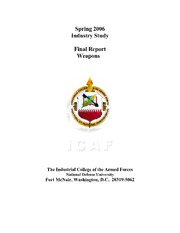
DTIC ADA475332: Weapons, 2006
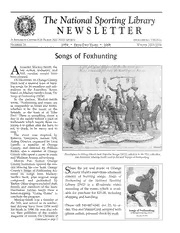
NSLM Newsletter - Winter 2006

ES 4755: GENERAL REQUIREMENTS FOR SAFETY OF LAMP CONTROL GEAR

Advances in Haptics
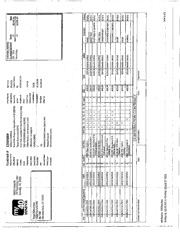
AR-M455N_20130108_120728 (13576602132270)_
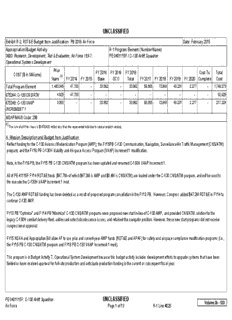
C-130 Airlift (USAF)
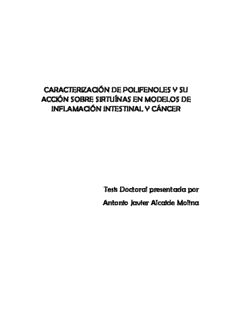
CARACTERIZACIÓN DE POLIFENOLES Y SU ACCIÓN SOBRE SIRTUÍNAS EN MODELOS DE

Desert Notes / River Notes
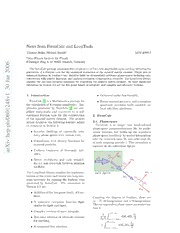
News from FormCalc and LoopTools

Process and Plant Safety
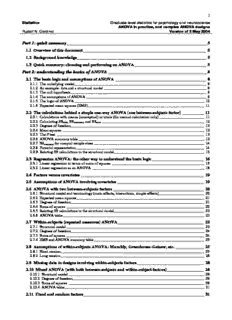
understanding the basics of ANOVA

Software Language Engineering: Third International Conference, SLE 2010, Eindhoven, The Netherlands, October 12-13, 2010, Revised Selected Papers
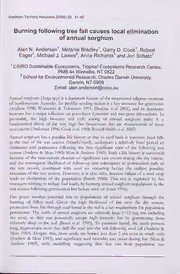
Burning following tree fall causes local elimination of annual sorghum
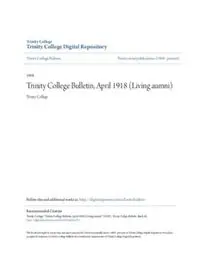
Trinity College Bulletin, April 1918 (Living aumni)

A Manual For People Living with ALS
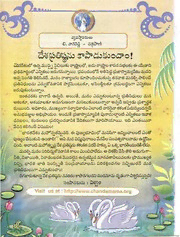
Chandamama 2006 2 Www. Rips Tracker.com
